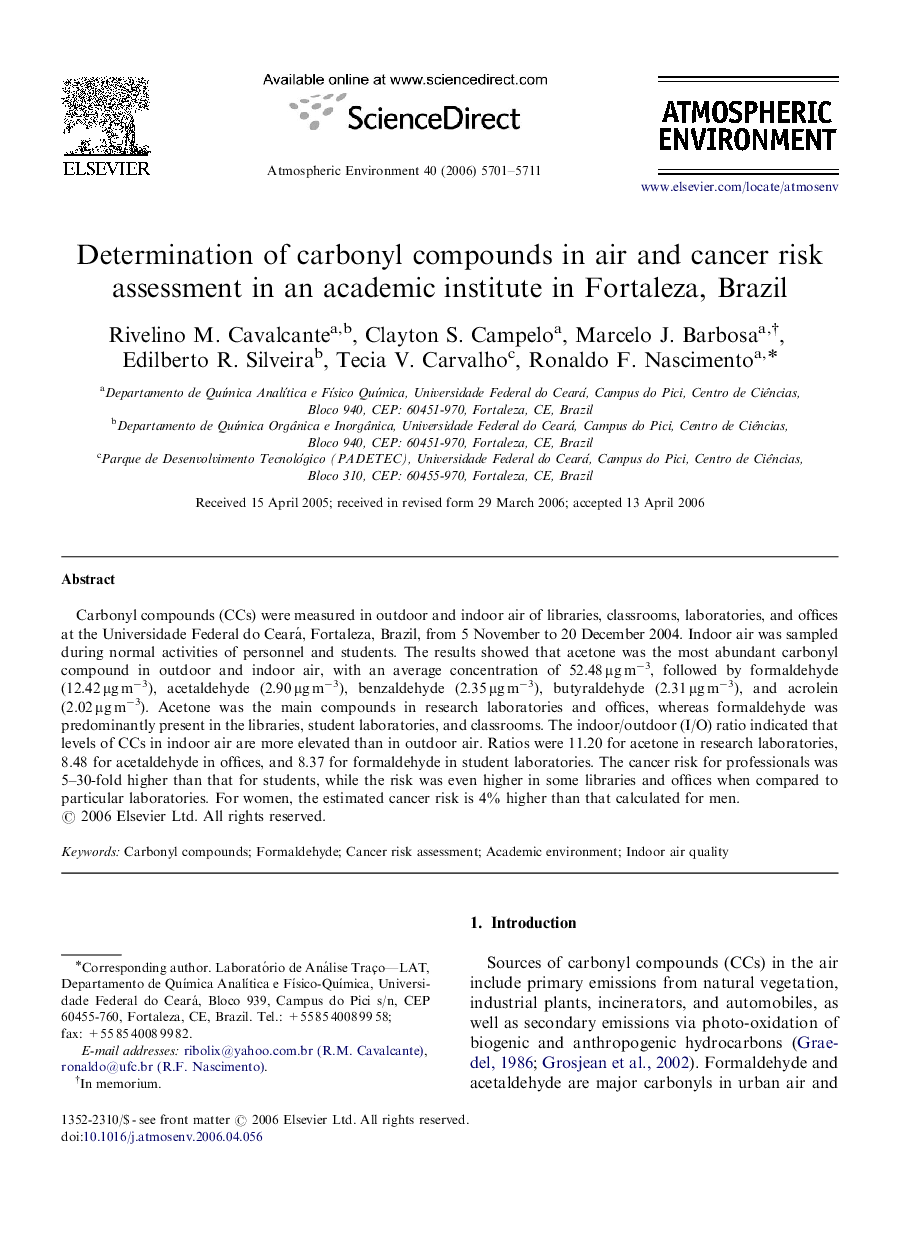| Article ID | Journal | Published Year | Pages | File Type |
|---|---|---|---|---|
| 4444372 | Atmospheric Environment | 2006 | 11 Pages |
Carbonyl compounds (CCs) were measured in outdoor and indoor air of libraries, classrooms, laboratories, and offices at the Universidade Federal do Ceará, Fortaleza, Brazil, from 5 November to 20 December 2004. Indoor air was sampled during normal activities of personnel and students. The results showed that acetone was the most abundant carbonyl compound in outdoor and indoor air, with an average concentration of 52.48 μg m−3, followed by formaldehyde (12.42 μg m−3), acetaldehyde (2.90 μg m−3), benzaldehyde (2.35 μg m−3), butyraldehyde (2.31 μg m−3), and acrolein (2.02 μg m−3). Acetone was the main compounds in research laboratories and offices, whereas formaldehyde was predominantly present in the libraries, student laboratories, and classrooms. The indoor/outdoor (I/O) ratio indicated that levels of CCs in indoor air are more elevated than in outdoor air. Ratios were 11.20 for acetone in research laboratories, 8.48 for acetaldehyde in offices, and 8.37 for formaldehyde in student laboratories. The cancer risk for professionals was 5–30-fold higher than that for students, while the risk was even higher in some libraries and offices when compared to particular laboratories. For women, the estimated cancer risk is 4% higher than that calculated for men.
